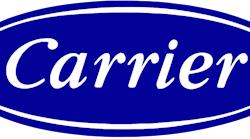Keeping buildings running effectively and efficiently is no easy task, as the performance of systems degrades over time (see “Stemming the Tide of Building-Performance Drift”). According to research conducted by Texas A&M University, as much as 20 percent of a commercial building’s energy consumption can be attributed to poorly operating systems. Overall system-performance decline can be limited through maintenance, but is difficult to eliminate.
Building management is further challenged by the strains of budget limitations, energy expenses, and changes to operating conditions. Commissioning, a process of recalibrating building systems according to optimal performance requirements, is a low-cost, high-return solution estimated to deliver energy savings of 5 to 25 percent in buildings. Global research continues to name commissioning among the top energy-conservation approaches available today.1
Benefits of Commissioning
Research by Lawrence Berkeley National Laboratory indicates energy savings achieved through commissioning tend to persist over a three-to-five-year period.2 The same study found commissioning results in 16 percent median energy savings and an estimated payback of 1.1 years for existing buildings and 13 percent median energy savings and an estimated payback of 4.2 years for new buildings.
Beyond energy savings, commissioning delivers the following benefits:
- Improved occupant comfort and satisfaction, which results in higher productivity.
- Increased building-system life.
- Improved documentation of operational processes.
- Optimal system performance.
- Compliance with global energy certifications and ratings.
- Increased asset and rental value.
Commissioning services are deployable at any stage of a building’s life cycle. Thus, it is important to pick the right commissioning type for a building’s needs.
Types of Commissioning
There are several types of commissioning:
- New-building commissioning (NBCx). NBCx is the process by which newly installed systems are fine-tuned and calibrated based on design and customer requirements. It is an essential step to ensuring systems run optimally from the get-go. Ideally, planning for NBCx begins during design.
- Existing-building commissioning (EBCx). There are two forms of EBCx: recommissioning (ReCx) and retrocommissioning (RCx). ReCx is the process of revisiting previously commissioned building systems to recalibrate to original design criteria and owner requirements. RCx is the process of testing, validating, and fine-tuning systems according to current facility requirements.
- Ongoing commissioning, or monitoring-based commissioning (MBCx). MBCx uses a combination of insights obtained from a continuous stream of performance data from a building management system (BMS) and standard RCx strategies to return systems to optimal performance. MBCx can be implemented in both existing and new structures to detect deviations, monitor changing conditions, and address system performance in a timely manner.
In MBCx, data collected from a BMS is run through an analytics engine to determine equipment in need of fine-tuning and measures that lead to energy efficiency and optimized performance. Ultimately, there is no substitute for engineering expertise and firsthand experience, as it is crucial to have experts review findings by superimposing actual site conditions on analyzed results.
The Commissioning Process
The process of commissioning involves five main steps:
- Design. If not involved in the design process, the commissioning agent/party must understand the design criterion by collecting and referring to the designs, system documentation, performance guidelines, etc.
- Action plan. The commissioning agent/party develops a plan of action with clearly defined objectives and timelines. If not directly conducting systems testing, the commissioning agent/party should develop a few test sequences to help validate systems commissioning and confirm objectives have been met.
- Performance testing. The testing of equipment is carried out in two stages: pre-functional performance testing (Pre-FPT) and functional performance testing (FPT). In Pre-FPT, equipment is tested in a stand-alone environment. In FPT, it is tested in an integrated setup. In the case of a new building, point-to-point validation of each piece of equipment or system is essential. In the case of an existing building, the focus is ensuring all systems and equipment are fine-tuned and calibrated.
- Reporting. After equipment testing, a report on the findings is prepared and submitted for approval. The report includes checks run, results obtained, issues identified, possible solutions, and an implementation overview. It is used to determine the measures that will be implemented following the commissioning exercise.
- Seasonal testing. An integral part of commissioning is post-occupancy seasonal testing. This is done by monitoring building operation, analyzing short-term trend data captured in the BMS, and developing an understanding of all issues faced by occupants and/or operators during different seasonal conditions.
Conclusion
Commissioning is a useful approach to restoring energy and controls performance and ensuring a high return on investment. By selecting the commissioning methodology most aligned with their building’s needs, building owners and facility managers can achieve measurable results throughout their building’s life.
References
- EPA. (2007). Energy star building upgrade manual chapter 5: Retrocommissioning. Retrieved from https://www.energystar.gov/sites/default/files/buildings/tools/EPA_BUM_CH5_RetroComm.pdf
- Mills, E. (2009). Building commissioning: A golden opportunity for reducing energy costs and greenhouse gas emissions. Retrieved from http://cx.lbl.gov/documents/2009-assessment/lbnl-cx-cost-benefit.pdf
As director of services for Schneider Electric’s US EcoBuildings group, Brian Ratcliff helps building owners transform the way they manage energy, systems, and workers. His career spans 21 years, beginning in the building-automation-and-control arena and expanding into energy-performance contracting, software, and connected services. In 2003, he opened the Richmond, Va., office of Schneider Electric and helped it grow into a perennial $30-million branch. In 2009, he co-founded Entegral Solutions, a Texas-based energy-services company that became a dominant player in the K-12 market. Most recently, he served as executive vice president of Flywheel, a software start-up developing fault detection and diagnostics.
Did you find this article useful? Send comments and suggestions to Executive Editor Scott Arnold at [email protected].











